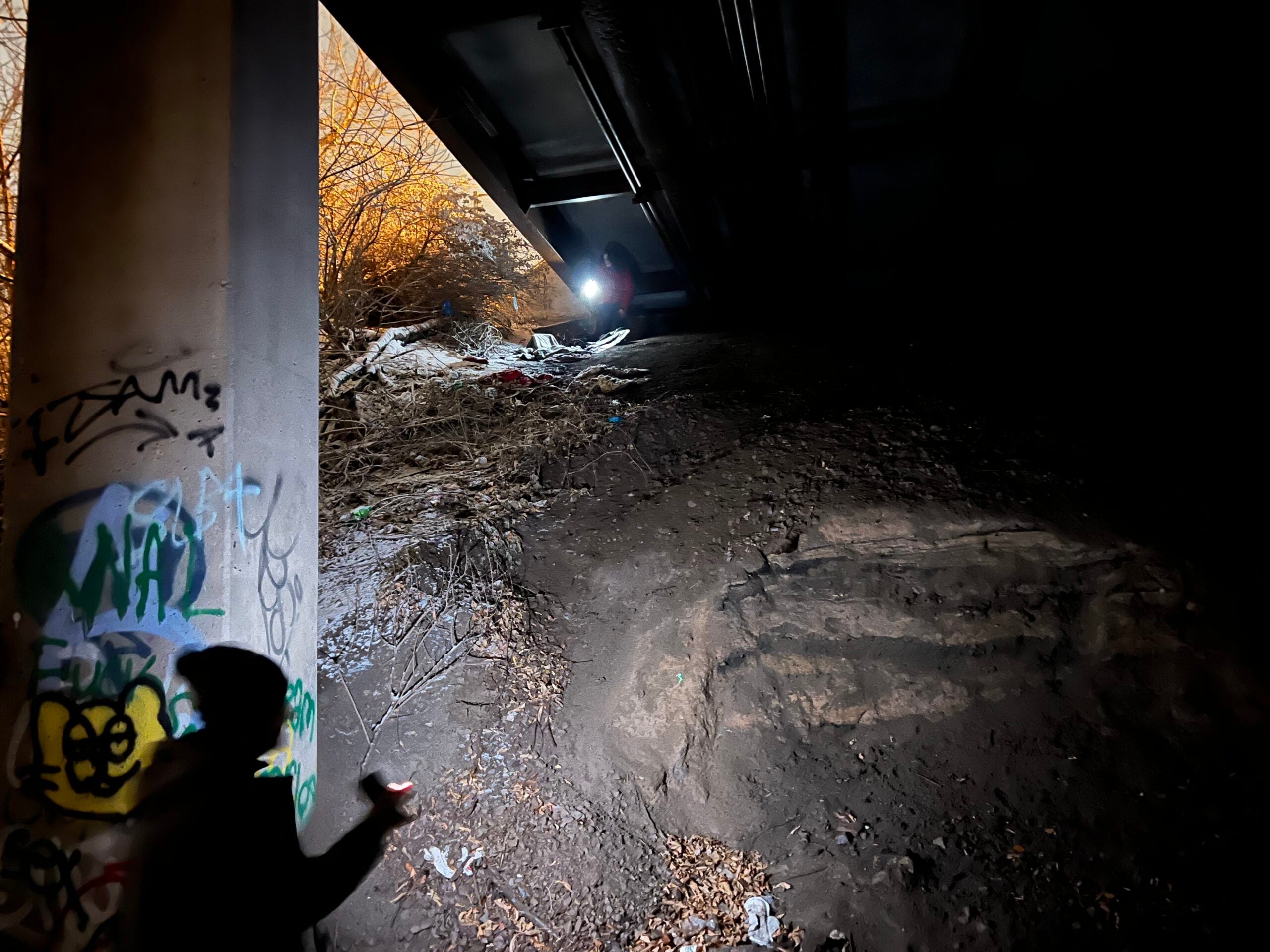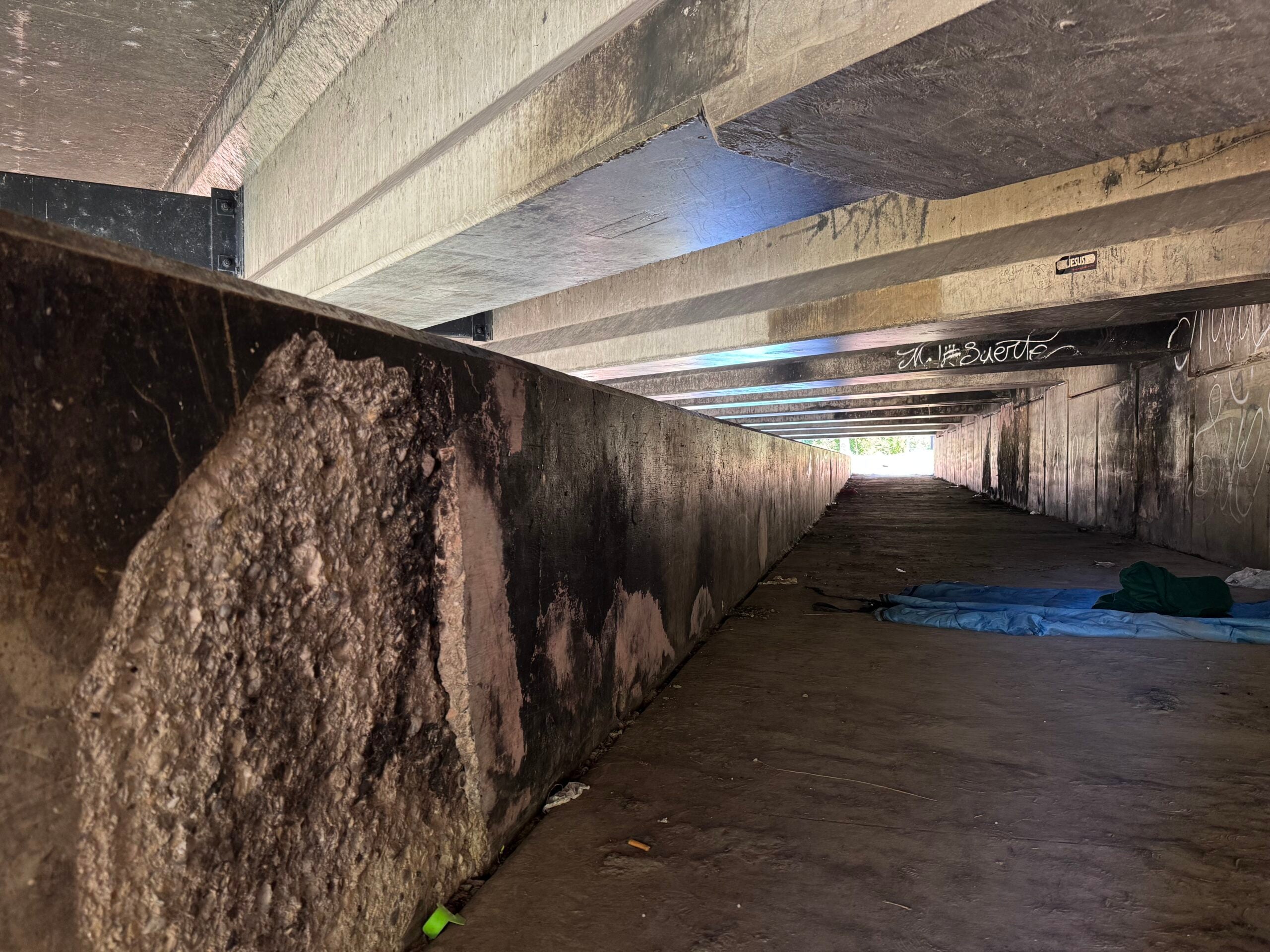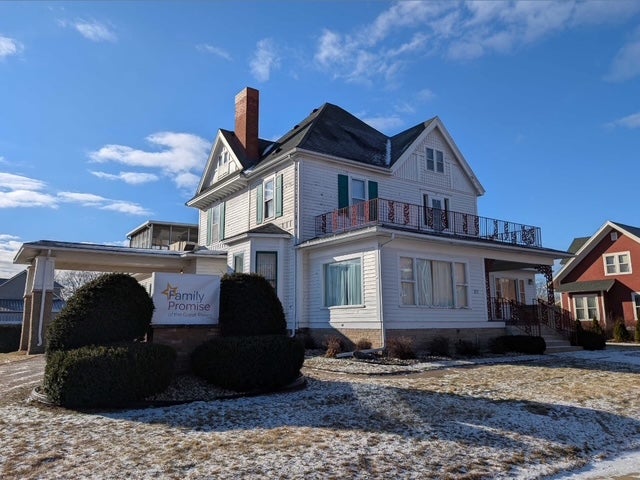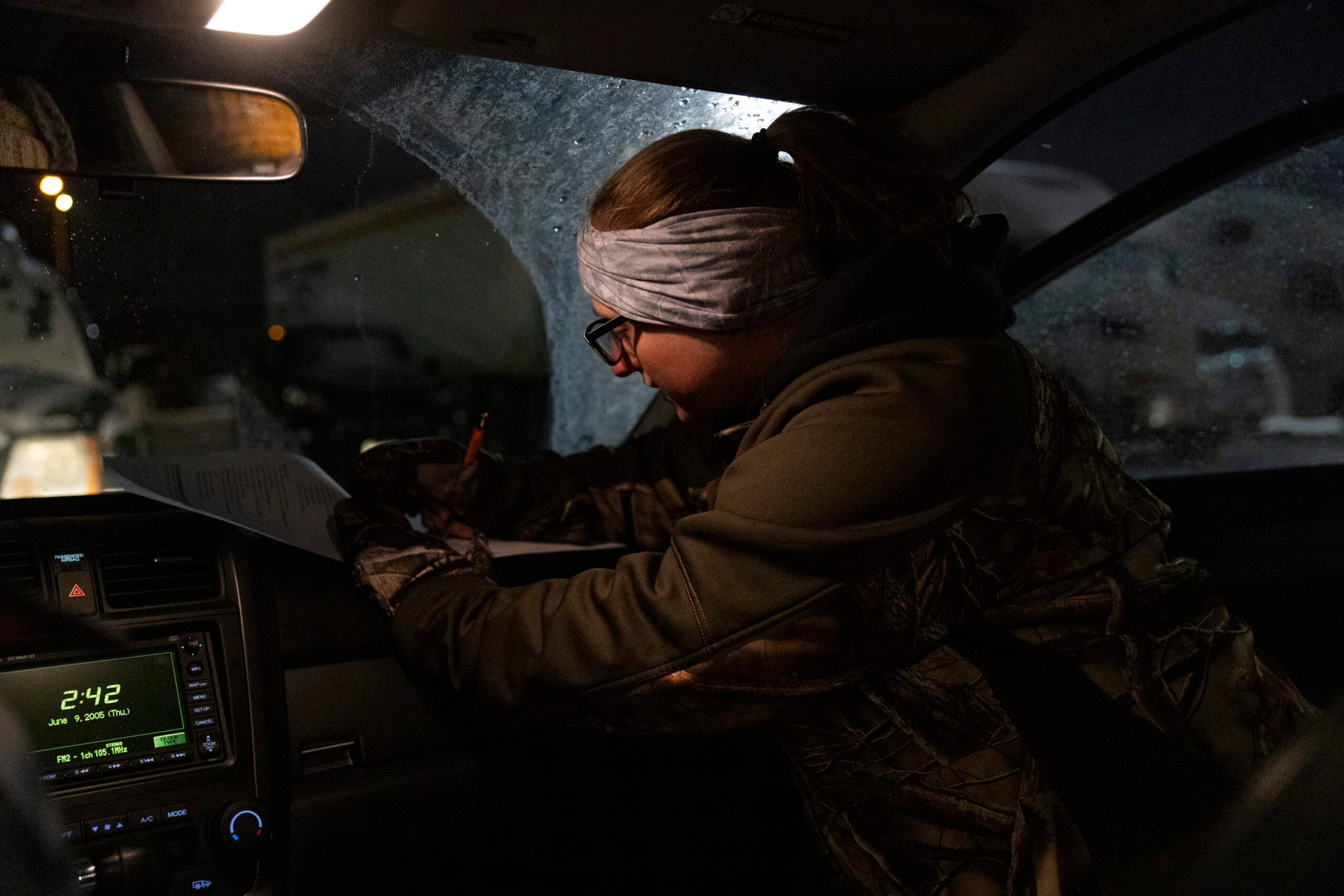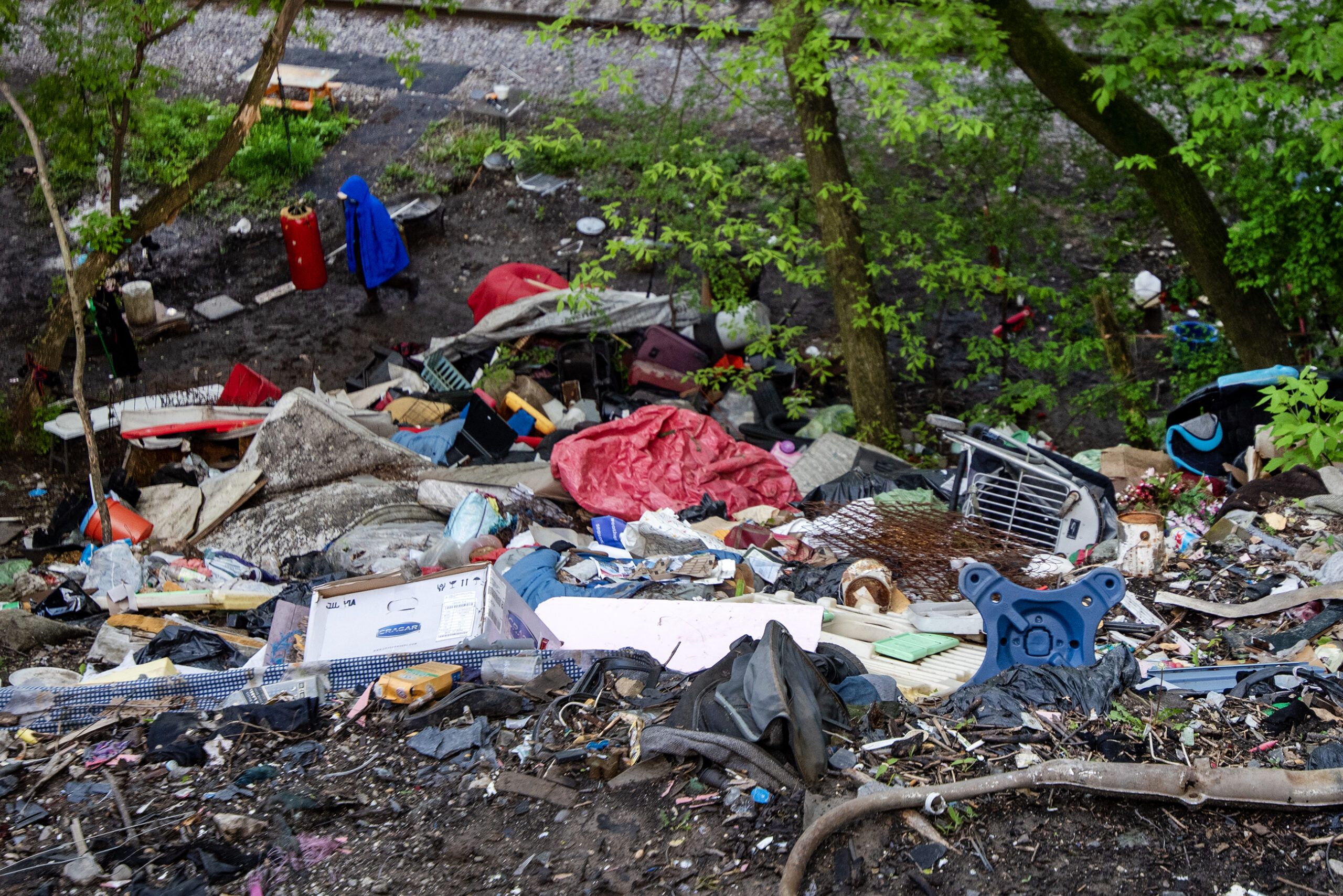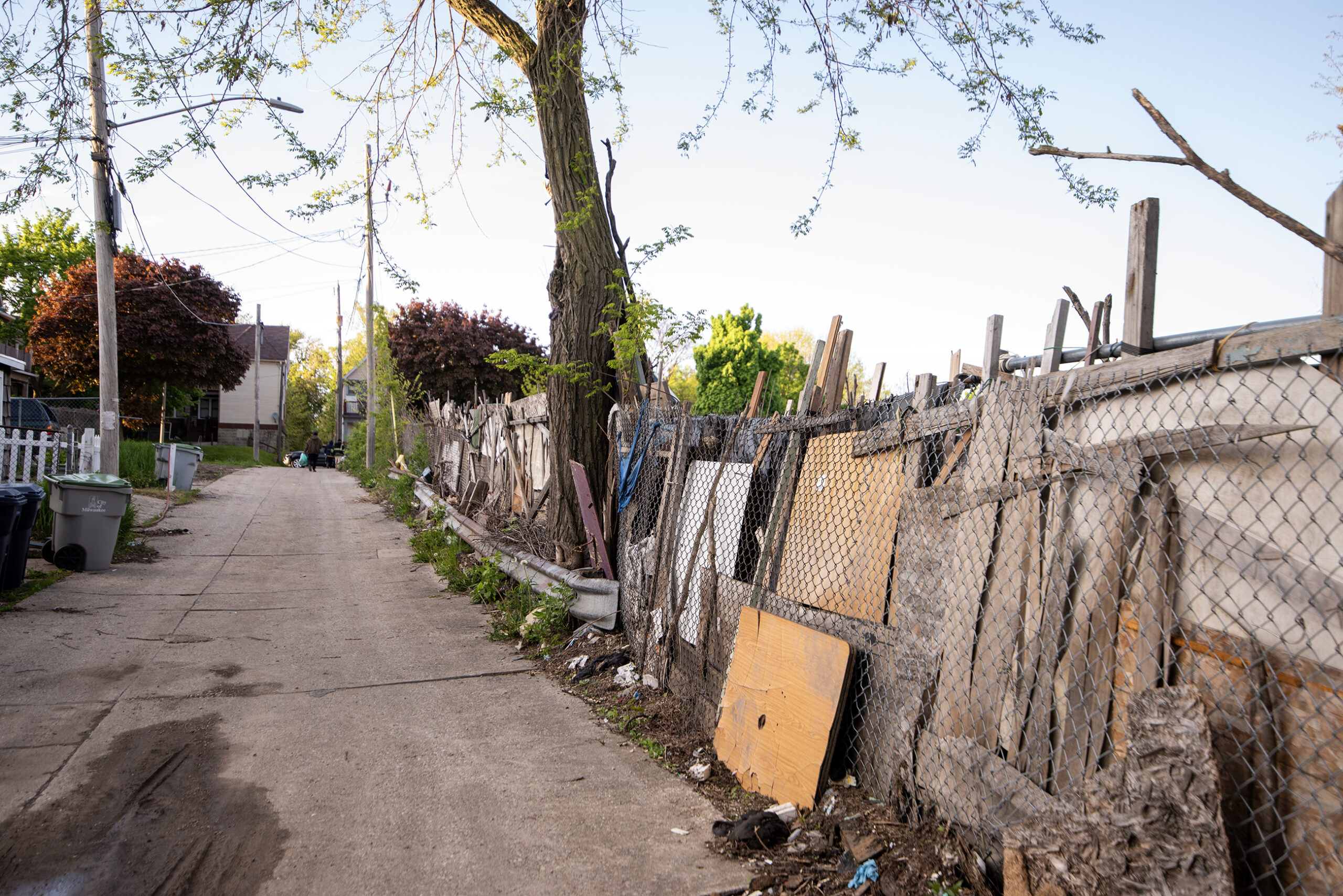On a frigid winter night, a group of around 30 homeless outreach coordinators spent the early hours of the morning attempting to count every person experiencing homelessness in Milwaukee County. It’s a job they’ve been preparing for the entire year.
Throughout the night, they climbed up steep hills underneath freeways, ducked below bridges and pushed away thick brush in parks across the county. Their job is to go into the places that many might see in passing but seldom visit in person.
Luiggi Paolo Francalanci, a community intervention specialist for Milwaukee County, had already visited many of the sites before.
News with a little more humanity
WPR’s “Wisconsin Today” newsletter keeps you connected to the state you love without feeling overwhelmed. No paywall. No agenda. No corporate filter.
“This area is known for Spanish speakers, but in the fall, someone decided to burn their stuff, so a lot of them have scattered,” Francalanci said as he walked across a street near the Kinnickinnic River.
Francalanci and Ashley Wisnefske, a housing manager for Outreach Community Health Centers, are working together on the annual point-in-time count of the homeless population. The count is a federally-mandated count of people who are experiencing homelessness during a one-night period. The data is used when applying for federal and statewide funding for homeless and housing programs. It can also help a community track progress.
In 2022, Milwaukee County had the lowest per-capita count of unsheltered homeless people in the nation, according to the U.S. Department of Housing and Urban Development. But this year, it’s unclear if the county will keep that statistic.
Eric Collins-Dyke, the assistant administrator of supportive housing and homeless services for Milwaukee County, said he’s already seen a steady increase in homelessness this year compared to last. Although the numbers from the point-in-time count won’t be released for several weeks or months, Collins-Dyke believes numbers are climbing because of a rise in housing insecurity, an increase in evictions and ongoing problems that many people are facing when it comes to mental health and substance abuse.
“I can say, with no hesitation, that we’ve seen a rise and an increase for sure, compared to last year,” Collins-Dyke said.
How is the count performed?
For months before the count, outreach workers build up a list of known locations where people without homes may be staying across the county. This year, that list included around 150 sites across Milwaukee County — from deep in the woods, to encampments on the side of the street.
On the night of the count, which was held Jan. 26, a group of around 30 homeless outreach workers with Milwaukee County, the city of Milwaukee, Community Advocates, Pathfinders, Street Angels and Outreach Community Health Centers, separated into seven vehicles. Shortly after 10 p.m., they began their work, with the search lasting until 3 a.m.
Because of continued outreach to the those experiencing homelessness, many workers already knew the names of the people they planned to talk to.
“There are many known encampments throughout the city and county, where we know for sure, OK, these people are staying there,” Collins-Dyke said.
After the in-person count is finished, the county has a week to complete their work to include people they may have missed. That weeklong timeframe was extended this year by the U.S. Department of Housing and Urban Development.
“I think it allows us an opportunity to capture people beyond just that one night,” Collins-Dyke said.
But the point-in-time count only captures a snapshot on one night of the year. And because the count comes at one of the coldest times of year in Wisconsin, people are more likely to have found temporary shelter that would keep them off the streets.
In the hope of getting a clearer idea of the number of unsheltered people, Milwaukee County will, for the first time, do quarterly counts of the homeless population this year.
“As outreach workers, we’re not just looking at specifically point-in-time, and basing our numbers off of that, we’re doing it quarterly … so we always have a pulse on what’s going on outside and how many individuals are outside,” Wisnefske said.
It’s likely that Milwaukee County will see an increase in the unsheltered population from April to October, Collins-Dyke said.
“The warmer months, historically, we’ve obviously seen more folks on the street,” he said. “I expect to see that again.”
A need for housing resources
The county put a lot of federal COVID-19 relief funds into programs to address the immediate needs of people without shelter — including paying for people to stay in motel and hotel rooms — as well as into structural fixes to help people avoid losing their homes in the first place. It’s piloting a Right to Counsel program to provide attorneys to people facing eviction, and a rental and mortgage assistance program.
In 2021, that led the county’s point-in-time count to reflect just 17 unsheltered homeless people. In 2022, that number grew by just one person.
“That was something that, without those resources, it would’ve been tough to accomplish,” Collins-Dyke said, adding that the funds were the “silver-lining” of the pandemic.
But some of those pandemic-related resources will soon come to an end. Evictions have also surged in Milwaukee County, according to Wisconsin Examiner. The state also has a shortage of more than 123,000 rental units, according to the National Low Income Housing Coalition.
That’s why Collins-Dyke is pushing for more options for permanent housing for the homeless.
“If we’re looking at increasing funding in any area, we have to look at more permanent housing,” he said. “Permanent and affordable.”
“Everyone that we serve on the street wants their own place to stay. They don’t want to be out there. They don’t want to be in a tent in the cold in the winter,” he added.
Wisconsin Public Radio, © Copyright 2026, Board of Regents of the University of Wisconsin System and Wisconsin Educational Communications Board.
